- Home
- William C. Dietz
Red Tide
Red Tide Read online
Other Books by William C. Dietz
THE WINDS OF WAR SERIES
Red Ice
Red Flood
Red Dragon
Red Thunder
Red Tide
AMERICA RISING SERIES
Into the Guns
Seek and Destroy
Battle Hymn
MUTANT FILES SERIES
Deadeye
Redzone
Graveyard
LEGION OF THE DAMNED SERIES
Legion of the Damned
The Final Battle
By Blood Alone
By Force of Arms
For More Than Glory
For Those Who Fell
When All Seems Lost
When Duty Calls
A Fighting Chance
Andromeda’s Fall
Andromeda’s Choice
Andromeda’s War
RED TIDE
THE WINDS OF WAR
WILLIAM C. DIETZ
Wind’s End Publishing
Copyright © 2019 by William C. Dietz
All rights reserved. No part of this publication may be reproduced, distributed, or transmitted in any form or by any means, including photocopying, recording, or other electronic or mechanical methods, without the prior written permission of the publisher, except in the case of brief quotations embodied in critical reviews and certain other noncommercial uses permitted by copyright law.
This is a work of fiction. Names, characters, and incidents either are the product of the author’s imagination, or are used fictitiously, and any resemblance to actual persons living or dead, business establishments, events, or locales is entirely coincidental.
Cover art by Damonza
This book is dedicated to all members of the United States Navy past and present.
Thank you for your service.
TABLE OF CONTENTS
Acknowledgements
Chapter One
Chapter Two
Chapter Three
Chapter Four
Chapter Five
Chapter Six
Chapter Seven
Chapter Eight
Chapter Nine
Chapter Ten
Chapter Eleven
Chapter Twelve
Chapter Thirteen
Chapter Fourteen
Chapter Fifteen
Author’s Note
About the Winds of War Series
About William C. Dietz
ACKNOWLEDGEMENTS
I would like to thank the people and organizations without whom this book wouldn’t have been possible:
Mark Bebar
Mark Bebar received a B.S. degree in Naval Architecture and Marine Engineering from Webb Institute of Naval Architecture in 1970 and a M.S. degree in Ocean Engineering from Massachusetts Institute of Technology in 1973.
Mark has over 48 years of experience with a focus on total surface ship system research and development, design and acquisition support.
Mr. Bebar began his career with the U.S. Navy Department – Naval Ship Engineering Center in 1970 and by 1971, was assigned to the concept/ feasibility study effort which led to the Patrol Hydrofoil – Missile (PHM) Class.
He was Design Integration Manager for PHM, a member of the Navy design team through lead ship testing, technical issue resolution with Boeing Marine Systems (BMS) and collaborative development of PHM-3 Series follow ship specifications.
In 1978, Mark was assigned to the PHM Program Office (PMS-303) at Naval Sea Systems Command HQ during the early stages of follow ship detailed design and construction.
Martin Grimm
Martin Grimm studied Naval Architecture in Sydney in the late 1980s and spent his career as a naval architect in the Australian Department of Defense in the field of Ship Hydrodynamics. Martin’s university thesis project had been a numerical simulation of the motions of surface piercing hydrofoils in waves.
Eliot James
Eliot James is an entrepreneur who, with fellow adventurers Bill and Bob Meinhardt, purchased the Aires when the government put her up for sale and subsequently, with the help of his wife Diana James, founded the USS Aries Hydrofoil Museum.
Eliot also served as a technical advisor, and was kind enough to coordinate input from other subject matter experts during the writing of this book.
Captain Carl Weiscopf USN (ret.)
Captain Weiscopf graduated from the United States Naval Academy and was commissioned as an Ensign in 1970. After serving on the USS Waddell (DDG 24) during the Vietnam war and other ships thereafter, he was named commanding officer of the USS Aries (PHM 5), patrol, hydrofoil, missile ship, which served as the model for the PHMs depicted in this book.
Expertise was garnered from the men and women who invented, built and supported the PHM fleet and the experimental hydrofoils that came before.
Those individuals include John Myer, Marylin Martin, John Monk, Vern Salisbury, Sumi Arima, Harry Larson, Ray Vallinga, Martinn Mandles and countless others—as well as former PHM crew members; Chuck Shannon, Dennis “Mac” McCarthy, Mark “Buz” Buzby, Jan Downing, and Robert “Buzz” Borries.
Many thanks to the following organizations as well:
The USS Aries Hydrofoil Museum, located in Gasconade, Missouri: https://www.ussaries.org
The International Hydrofoil Society (IHS): https://www.foils.org
The Historic Naval Ships Association https://www.hnsa.org
CHAPTER ONE
Yulin Harbor, Hainan Island, China
Because of the Yulin navy base, the neighboring city of Sanya was subject to a 2100 curfew and blackout. So, when the ships left the harbor at 0100, there was no fanfare.
The ships were mostly dark, their engines thrumming, as the vessels proceeded single file toward the temporary gap in the closely guarded breakwater. A tug was waiting to pull the sub net back into place.
The carrier strike group’s code name was Nan Feng (South Wind), and it consisted of six ships. A pilot boat led the way, followed by the destroyers Changchun, and Macau. The aircraft carrier Henan came next. Once the carrier slid past the bombproof sub pen, the attack submarines Changzheng (Long March) 401, and the Changzheng (Long March) 706, slipped out to join the nearly invisible procession.
The subs were followed by something new to the Chinese navy, and to the entire world for that matter. And that was the semi-submersible cruiser Hailong (Sea Dragon).
She was 667 feet long, powered by a nuclear reactor, and shaped like a submarine with two conning towers. One was located forward, and the other aft, providing redundancy in the case of battle damage.
But what made the Sea Dragon so dangerous was her cutting-edge design. Thanks to the cruiser’s sleek hull she could travel semi-submerged, so as to reduce drag, and keep pace with a fast-moving naval strike group. Or, the Dragon could fight while almost entirely submerged, thereby reducing her radar cross section. What the enemy couldn’t see, it couldn’t hit.
Of even greater importance however was the semi submersible’s total throw weight. Thanks to the Sea Dragon’s automated systems, and relatively small crew, most of her length was devoted to offensive and defensive weaponry. That included the popup railgun located forward of Conning Tower One, as well as rows of internal launchers that could fire two hundred missiles, at a rate of one every eight seconds.
None of which impressed Vice Admiral Jinhai Wen who, along with key members of his staff, were present on the Henan’s bridge. Wen had been in the navy for thirty-two years: first as a pilot, then as a surface warfare officer, and later as a senior staff officer.
Now Wen had what he’d always wanted, and that was command of a carrier battle group. And the situation would have been perfect if it weren’t for what Wen often referred to as “the barge.” Wen p
retended to scan a nav screen. “Where’s the Sea Snake?” he sneered. “Did it sink? Get Ko on the horn. Tell him to fire a flare.”
The officers laughed but the enlisted men didn’t. They weren’t allowed to. Jokes were reserved for officers.
***
Aboard the Sea Dragon
The Sea Dragon was divided into six compartments from bow to stern: The Gunnery compartment, Operations Department One, the Missile Compartment, the Reactor Compartment, the Engine Room, and Operations Department Two.
And that was where Lieutenant Junior Grade Jev Jing’s duty station was located. He was the ship’s third ranking Communications Officer, and responsible for all incoming and outgoing radio traffic during his watch.
The com center was located adjacent to the larger and more complex Combat Information Center, or CIC, which processed all information related to command and control. But because Senior Captain Ko was forward in Ops One, the second CIC was on standby.
Jing liked the arrangement because it meant that the heat, if any, was on Com officers One and Two, who were forward. That left him free to listen in on the radio traffic between ships, and if he was lucky, eavesdrop on one of Admiral Wen’s famous rants. The latest of which was directed at the Macau’s captain: “What’s wrong, Pang? Is your helmsman drunk? Order the bastard to steer a straight course.”
Jing’s radio operator could hear such exchanges too, but was careful to keep a mostly straight face, as the officer chuckled.
“What’s so funny?” a third person demanded. “Stand to attention.”
Jing knew the voice belonged to the ship’s political officer, Lieutenant Commander Bohai Ang. A man who knew very little about the navy, but had connections, and delighted in exercising his power over those of lesser rank.
Jing stood, did a neat about face, and was careful to focus his eyes on a point six inches above Ang’s head. “Now,” Ang growled. “You were laughing. Please share the joke with me. I would like to laugh too.”
“Sir, yes sir. I was thinking about a joke I heard earlier today. A married couple went out to dinner. Suddenly, the wife exclaimed, ‘I forgot to turn the gas off! There could be a fire.’
“Then, in an attempt to comfort her, the husband said, ‘Don’t worry. I forgot to turn the water off.’”
Ang frowned. “And you think that’s funny?”
“Sir, yes sir. Because if a fire starts the water will …”
“I know what the water will do,” Ang replied. “What is the third principle?”
“That is the principle of upholding the communist party’s leadership, sir.”
Ang nodded. “Correct. Now sit down and focus on your duties.”
Jing performed another about face and sat. And, thanks to Jing’s excellent peripheral vision, he saw Ang leave the compartment. Cao ni. (Fuck you.)
***
The South China Sea welcomed the carrier strike group with negligible two-foot waves and a southerly breeze. Orders called for the vessels to sail east, around the north end of Luzon, and into the Philippine Sea.
That would have been dangerous had the Philippines been part of the Alliance that included the United States, Great Britain, France, Germany, Israel, Australia, Saudi Arabia, India, Japan, Australia and New Zealand, among others.
But President Antonio Costas and his government had chosen to declare the Philippines as a neutral country. That made practical sense, given the country’s proximity to China. As did the rest of the president’s pro-Chinese policies.
There was a price to pay however. Many Filipinos were sympathetic to the Alliance, hated Costas, and wanted to overthrow their government. Something they weren’t likely to accomplish so long as China continued to provide Costas with the money and weapons his secret police used to keep the populace under his thumb.
It had been a long day for Captain Ko. And once the Sea Dragon was well clear of land, he felt comfortable turning the ship over to his executive officer (XO) Commander Shi. The relationship between the men was good. That meant Ko felt free to speak more openly than he usually did. “Let me know if the Admiral gets his shorts in a knot. But I suspect he’s well into his third glass of Huangjiu (yellow wine) by now.”
Shi smiled. “Don’t worry, sir … I’ll let you know if a storm starts to blow.”
After departing Operations One, Ko made his way into officer country. His cabin was 12 feet long and 6 feet wide. Not a large compartment by civilian standards, but huge aboard the Sea Dragon, and nearly the size of the officer’s mess.
Most of the space was occupied by his desk, standing locker, and a metal framed bed. The adjoining head (bathroom) consisted of a sink, marine toilet, and a shower. That’s where Ko went first. To cleanse his body, and to some extent, his spirit.
The shower lasted exactly two minutes and not a second more. That was the length of time allotted to sailors, so that was the amount of time that Ko allowed himself—for to consume more than his share would be dishonorable.
Ko toweled off, entered the cabin naked, and made his way to the far end of the compartment where, rather than the couch naval architects had planned for, an altar to the goddess Tianfei, the “Princess of Heaven,” was waiting for him.
Tianfei had many other names as well, including Ma-tsu, Ah-Ma’ Linghui Furen, and Linghui Fei. But regardless of which name worshipers chose to call her, they knew the goddess to be the deity of all seafarers.
A two-foot-tall statue of Tianfei occupied the center of the altar. The likeness was carved from white alabaster. Her hair was pulled back into a bun, her head turned slightly to the right, her eyes downcast. One hand was extended as if to convey a blessing.
And there, rising to break around her gown, were waves of beautifully sculpted stone. The flowers Ko had brought aboard were displayed in permanent containers to either side of the goddess; all of them were blue like the endless sky and ocean.
To approach Tianfei naked was to proclaim Ko’s humility. And that was important because Tianfei cared nothing for rank or wealth. Her favors were, and had always been, for common sailors.
Ko knelt in front of Tianfei and bowed. His eyes were focused on the deck. “I am a sailor. I ask your blessing upon my ship and crew.
“We are setting forth on a journey which, if we’re fortunate, will further the war effort. And that is a matter of great importance because, just as China shaped the past, so must China shape the future—and eventually the planet. May your eyes see us, may your ears hear our prayers, and may your divine powers protect us from harm.”
After completing his devotional Ko donned fresh underwear, brushed his teeth, and prepared a uniform for the next watch. It was the same routine Ko had followed for twenty-eight years. First as a common sailor. Then rising step-by-step to the lofty position of senior captain. A process which, combined with Ko’s decision to be celibate, left no room for a wife or children.
Finally, it was time to slip between cool sheets and grant himself permission to sleep. A state which, after decades in the navy, Ko could enter within seconds, making the most of the opportunity to rest. Ko drifted away.
When the phone rang Ko awoke quickly with all of his senses alert. A glance at his bedside clock informed him that he’d been asleep for three hours and forty-two minutes. He lifted the handset. “Yes.”
“Shi, sir. You are to participate in a command call eighteen minutes from now. According to the Strategic Support Force (SSF), an American carrier strike group is approximately 200 miles east of Luzon, and headed our way. Admiral Wen has orders to attack and destroy that force.”
Thanks to his many years in the navy, Ko could listen to Shi’s summary, and guess what was taking place in Beijing. The Allies had sent groups into the Philippine Sea before. And so long as they stayed east of Luzon the Central Military Commission (CMC) had been satisfied to fire threats rather than missiles at the enemy.
So, what had changed? The answer was obvious. On orders from President Enlai, the People’s Liberation Army (P
LA) had dispatched thousands of troops into India as part of the much ballyhooed “Big Push.” An initiative intended to conqueror all of India and establish a link with ally Pakistan.
But now, rather than occupying India, the army was fighting to hold onto the long, north-south slice of the country they’d been able to seize earlier. A failure which reflected poorly on both Enlai and the CMC. Viewed through that prism the Allied strike group was a gift from Tian (heaven). A quick and decisive victory over the Allies would go a long way toward repairing Enlai’s image as China’s infallible leader. “Thank you,” Ko said. “I will join you in Operations One for the call.”
“Yes, sir.”
“And Shi …”
“Sir?”
“Sound battle stations.”
***
Aboard the aircraft carrier USS Concord, east of Luzon
Carrier Strike Group 6 (CCSG 6) consisted of the aircraft carrier USS Concord, the frigate Trevor Jones, the destroyers Lyndon B. Johnson and Herman Cady, the fast combat support ship Bridge, and the submarines Washington and Utah. All of which were taking part in a search and rescue operation in the area east of Luzon. The trick was to carry out that mission without engaging the Chinese fleet lurking to the west.
But the American ships were 200 miles off Luzon. That gave Hoyer some pad, and he was determined to take advantage of it. A US navy transport plane carrying eleven people had crashed in the Philippine Sea the previous day. Eight people had been rescued and transferred to the Concord for medical evaluation. But three were missing.
By searching all night, the strike force’s ships and aircraft had covered more than 370 square miles of ocean by sunrise. Hoyer knew the chances of finding the remaining passengers was slim, but he wasn’t about to give up. Not until forced to do so.
Hoyer was on the Concord’s bridge, ploughing through the administrative crap the Pentagon had dropped on him during the night, when Captain George Danby dropped into the chair beside him. The two men went way back, all the way to Annapolis, where Danby had been a year behind Hoyer. “We’ve got a problem, Will,” Danby said. “According to the latest from the National Recognizance Office (NRO), a Chinese strike force put to sea from Yulin.”

 Halo: The Flood
Halo: The Flood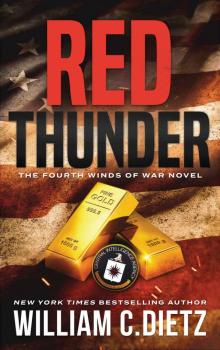 Red Thunder (Winds of War Book 4)
Red Thunder (Winds of War Book 4)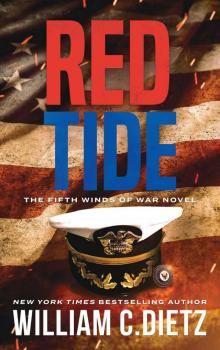 Red Tide
Red Tide Graveyard
Graveyard Deadeye
Deadeye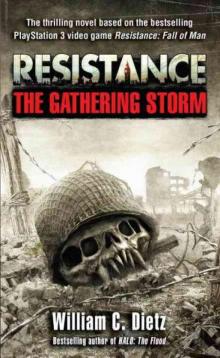 Resistance: The Gathering Storm r-1
Resistance: The Gathering Storm r-1 Legion Of The Damned - 02 - The Final Battle
Legion Of The Damned - 02 - The Final Battle Galactic Bounty
Galactic Bounty When All Seems Lost
When All Seems Lost Red Flood (Winds of War Book 2)
Red Flood (Winds of War Book 2) By Blood Alone
By Blood Alone Andromeda's War (Legion of the Damned Book 3)
Andromeda's War (Legion of the Damned Book 3) Hitman: Enemy Within
Hitman: Enemy Within Bodyguard
Bodyguard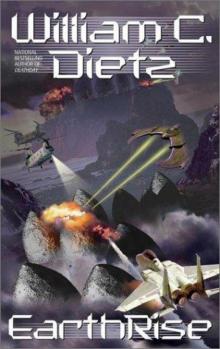 EarthRise
EarthRise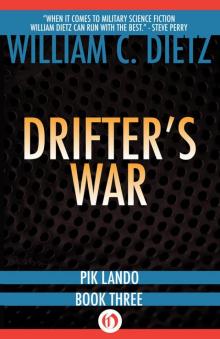 Drifter's War
Drifter's War For More Than Glory
For More Than Glory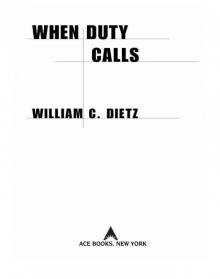 When Duty Calls
When Duty Calls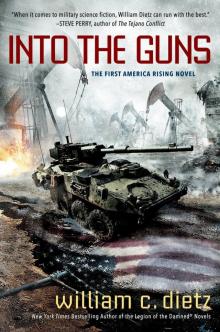 Into the Guns
Into the Guns Drifter
Drifter Ejecta
Ejecta When All Seems Los lotd-7
When All Seems Los lotd-7 Alien Bounty
Alien Bounty When Duty Calls lotd-8
When Duty Calls lotd-8 Steelheart
Steelheart Matrix Man
Matrix Man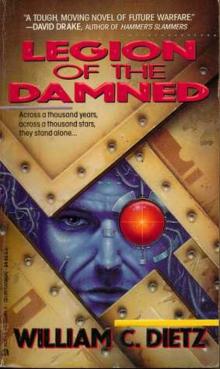 Legion of the Damned
Legion of the Damned Snake Eye
Snake Eye Logos Run
Logos Run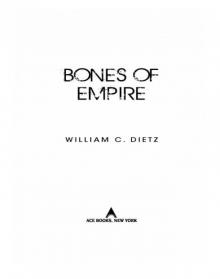 Bones of Empire
Bones of Empire McCade's Bounty
McCade's Bounty Mars Prime
Mars Prime Where the Ships Die
Where the Ships Die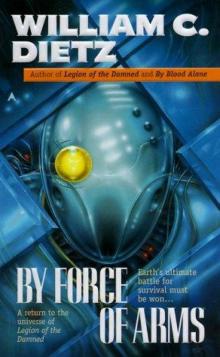 By force of arms lotd-4
By force of arms lotd-4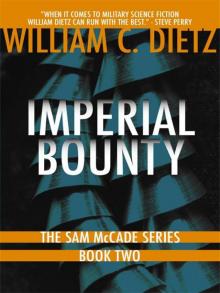 Imperial Bounty
Imperial Bounty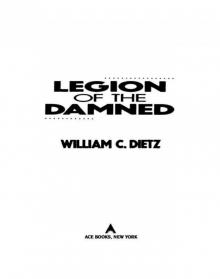 Legion Of The Damned - 01 - Legion of the Damned
Legion Of The Damned - 01 - Legion of the Damned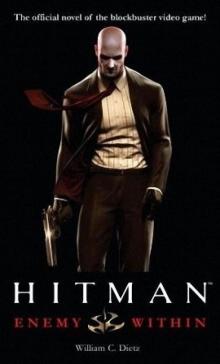 Hitman: Enemy Within h-1
Hitman: Enemy Within h-1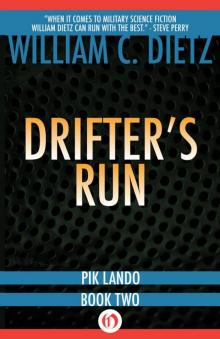 Drifter's Run
Drifter's Run A Fighting Chance
A Fighting Chance McCade on the Run (Sam McCade Omnibus)
McCade on the Run (Sam McCade Omnibus) Legion Of The Damned - 06 - For Those Who Fell
Legion Of The Damned - 06 - For Those Who Fell Halo. Flood
Halo. Flood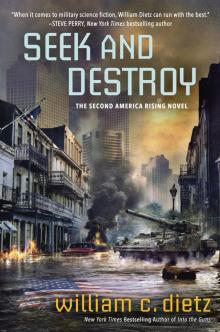 Seek and Destroy
Seek and Destroy Heaven's Devils si-1
Heaven's Devils si-1 Runner
Runner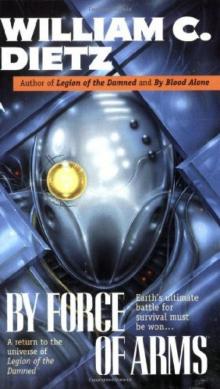 By Force of Arms
By Force of Arms A Hole in the Sky
A Hole in the Sky The Seeds of Man
The Seeds of Man Andromeda's Fall
Andromeda's Fall Andromeda’s Choice
Andromeda’s Choice Prison Planet
Prison Planet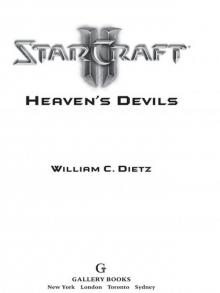 Heaven’s Devils
Heaven’s Devils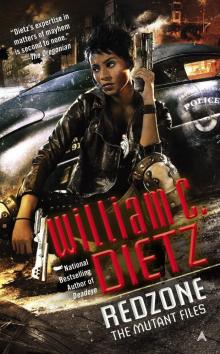 Redzone
Redzone Jedi Knight
Jedi Knight